Answered step by step
Verified Expert Solution
Question
1 Approved Answer
Identify the main problem or issue in the case and possible solutions. use the USC-CT method Going Global In 1953 Bower and his wife took
Identify the main problem or issue in the case and possible solutions.
use the USC-CT method
use the USC-CT method
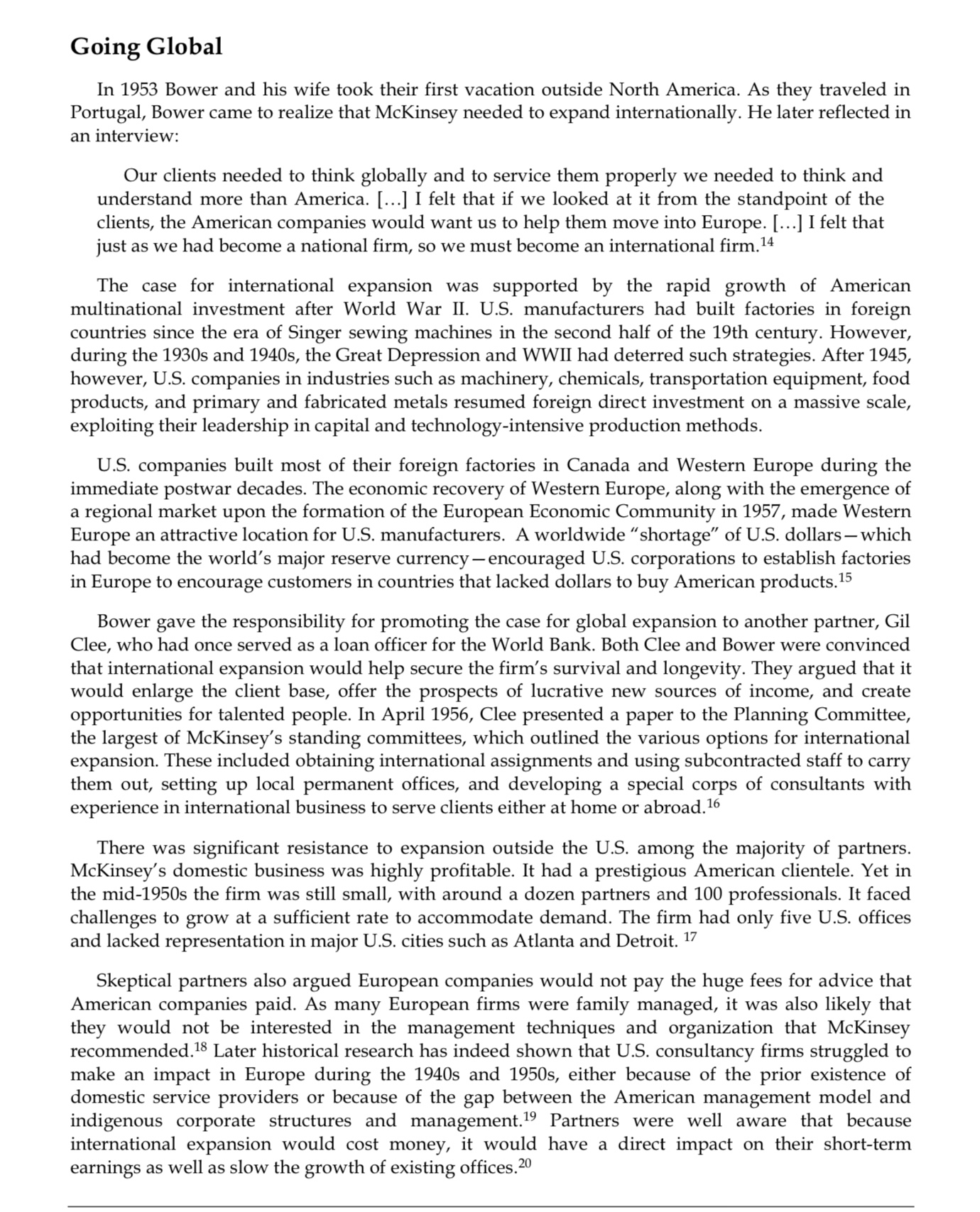
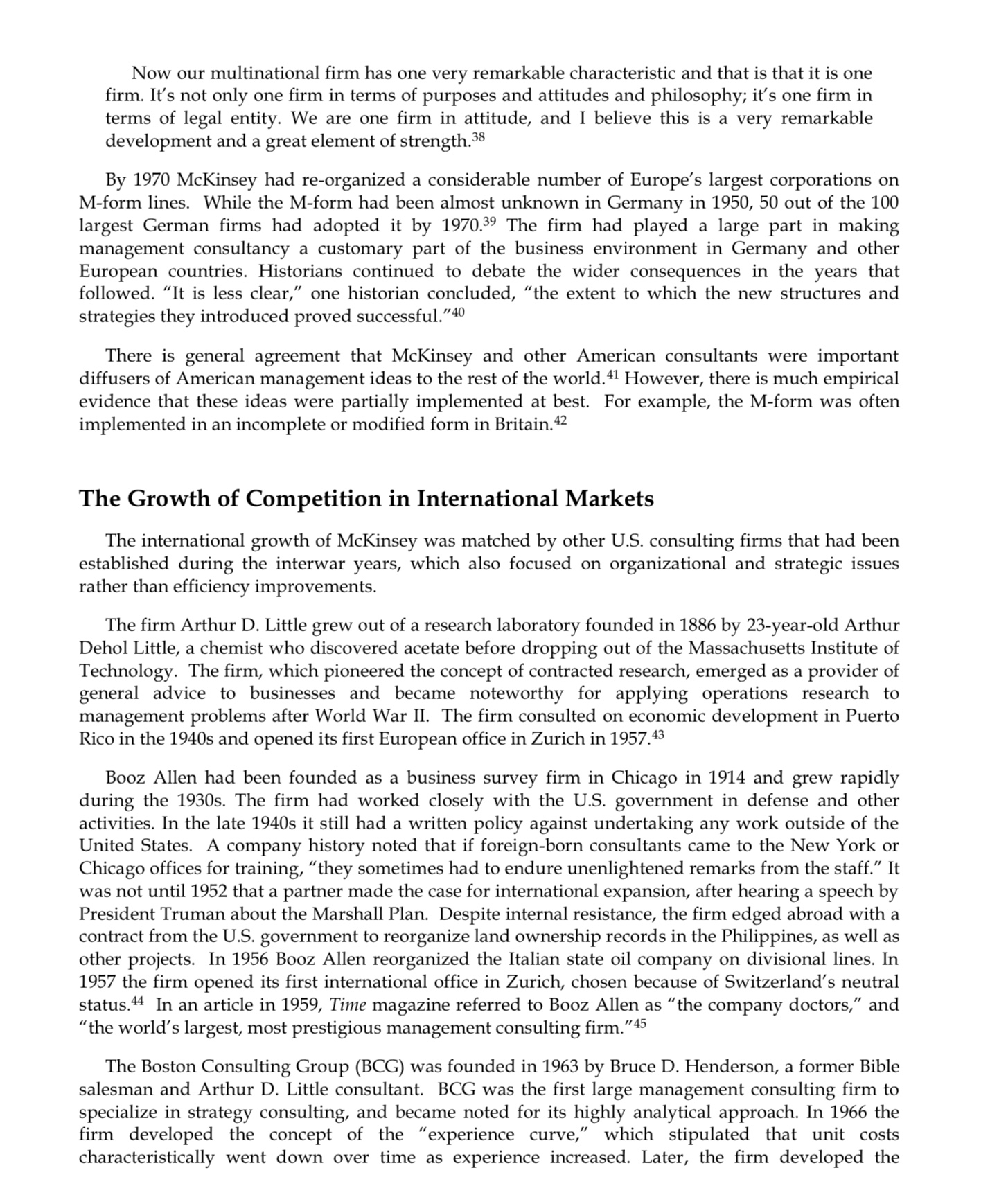

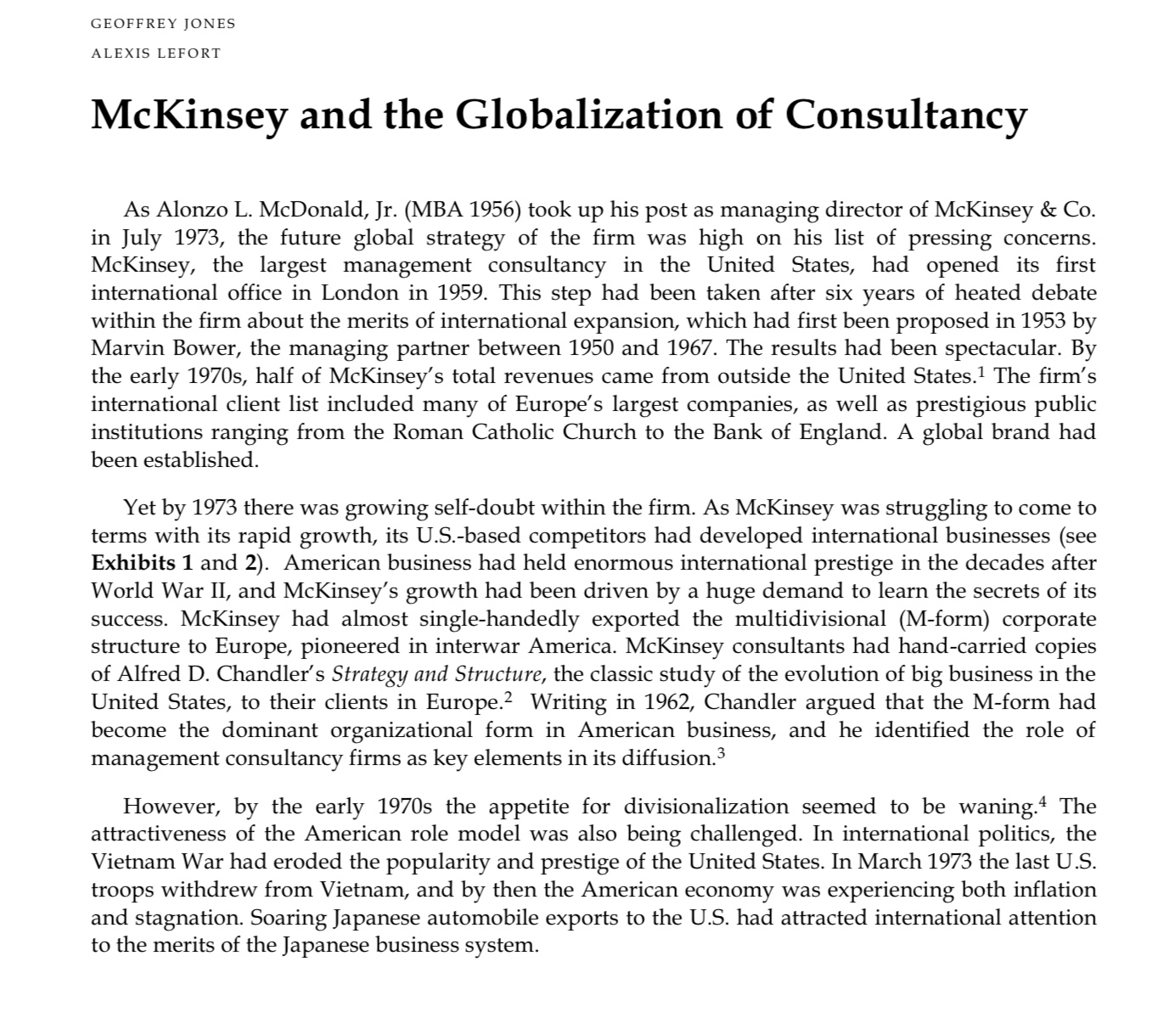
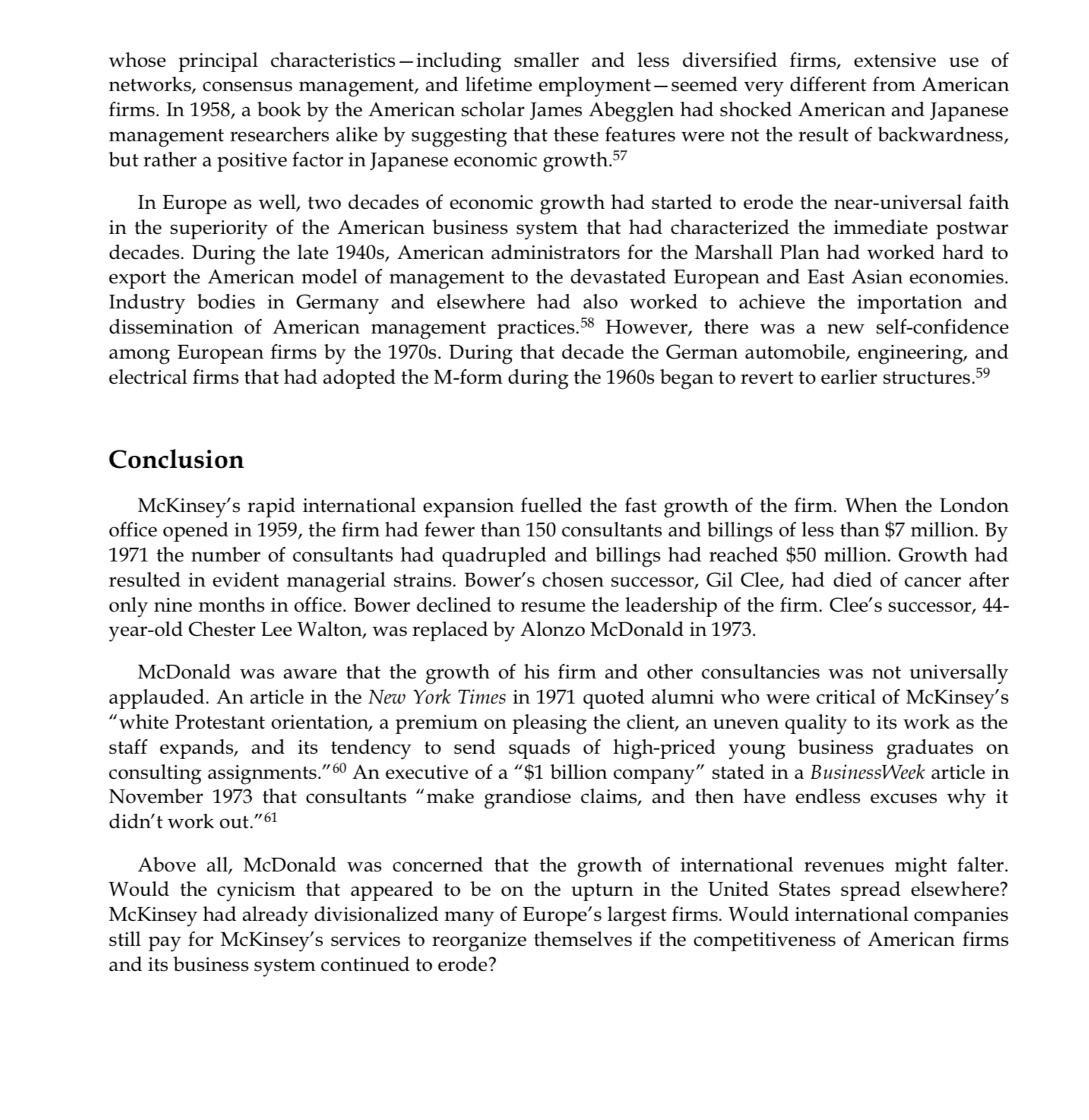
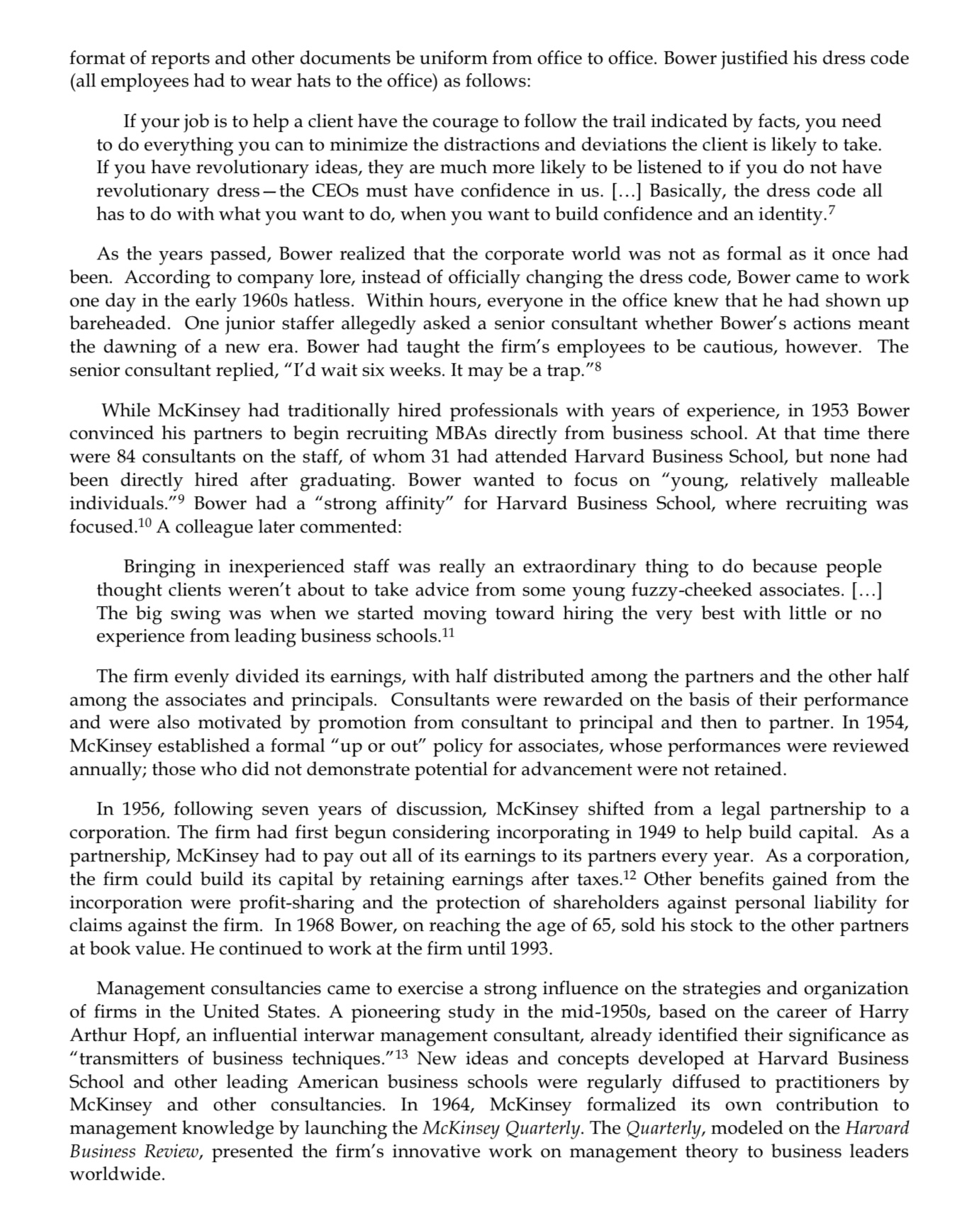
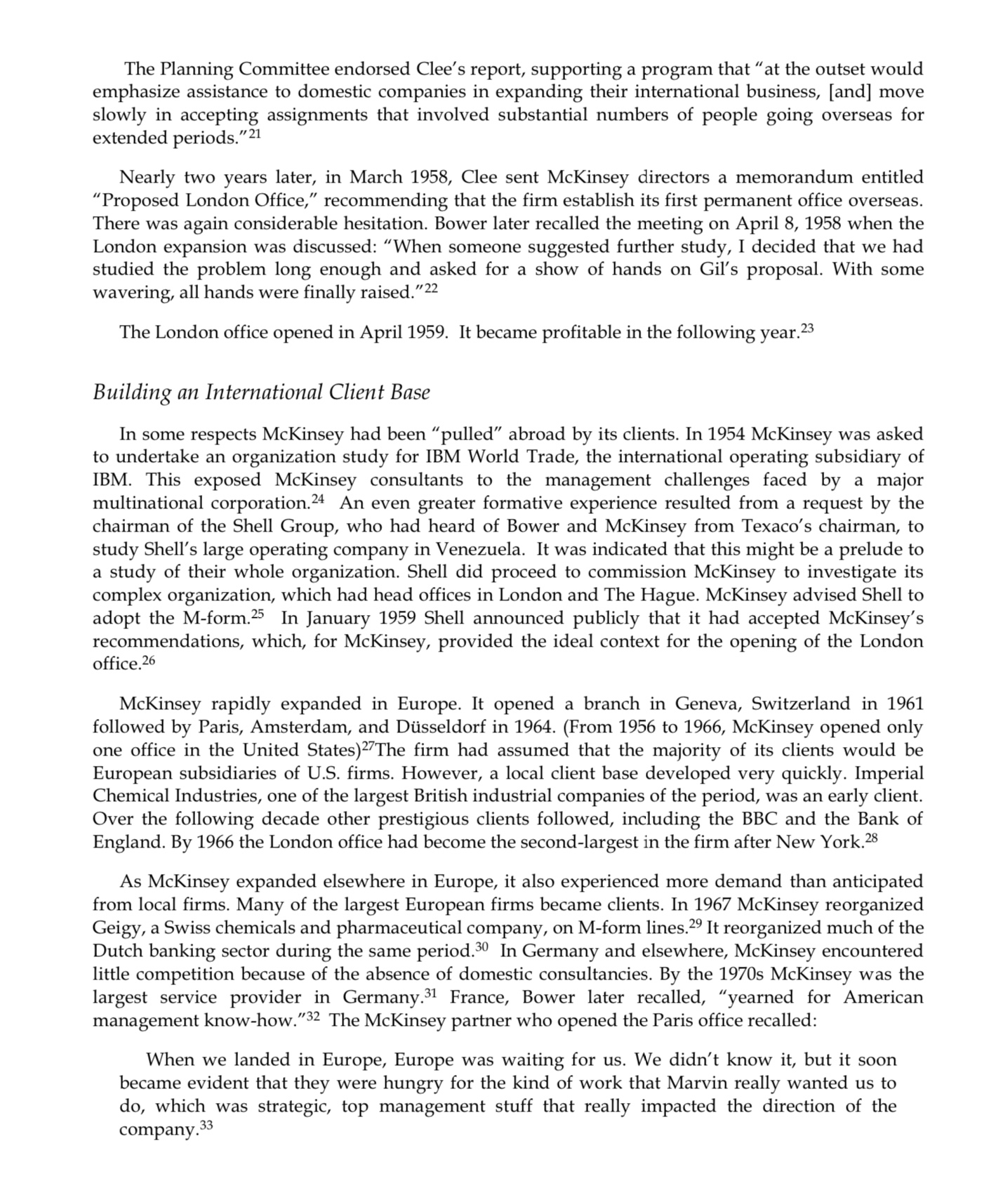
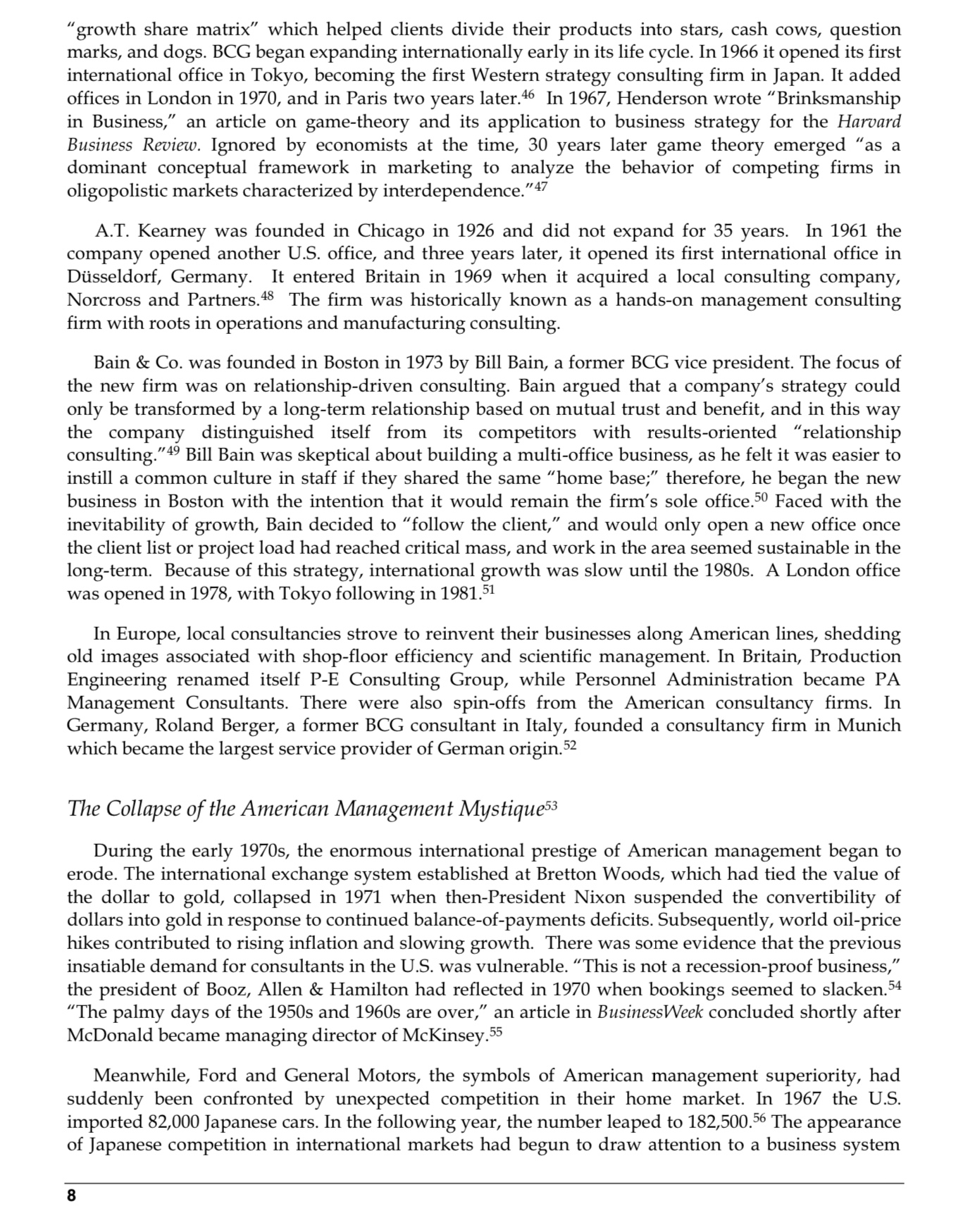
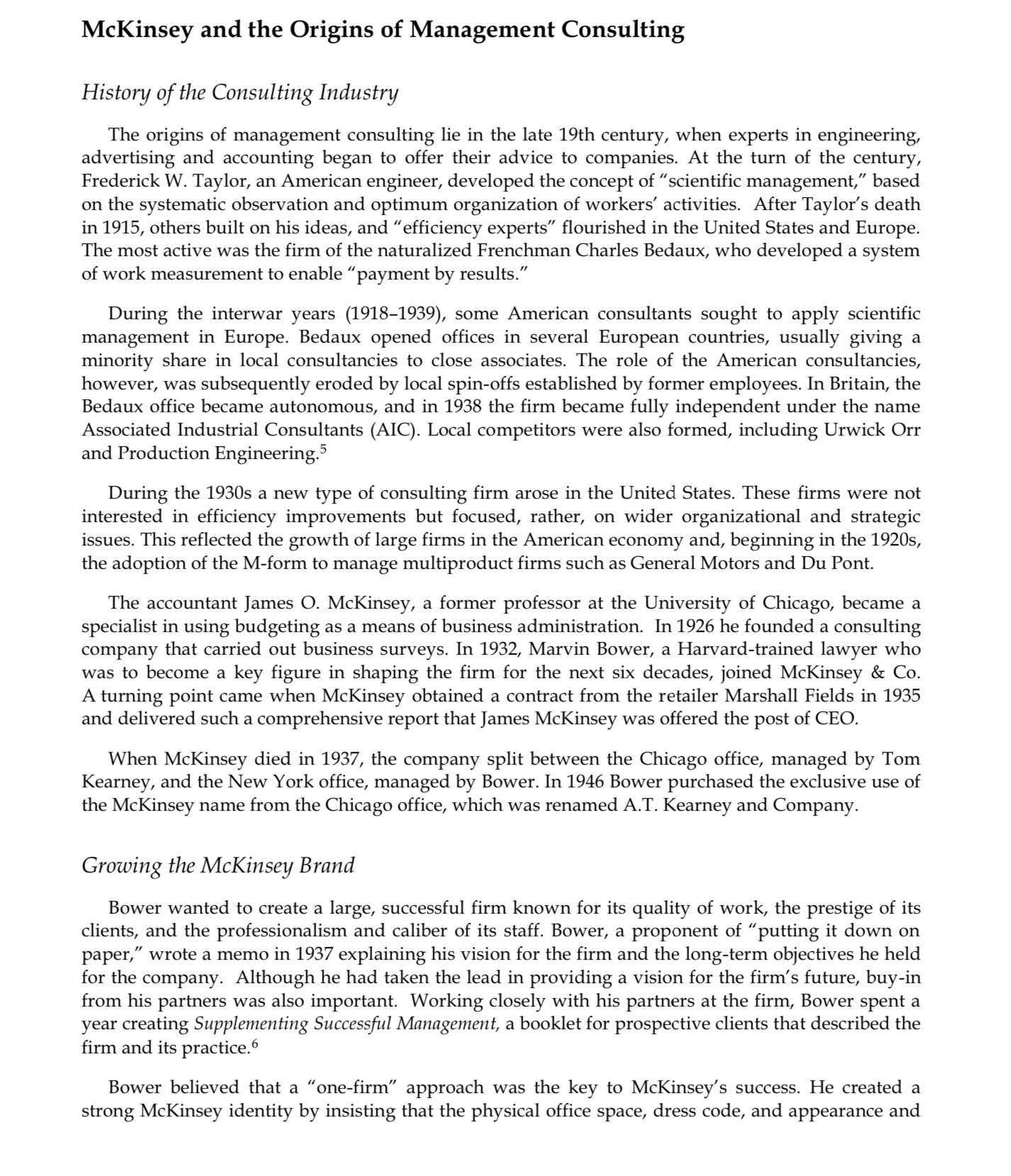
Going Global In 1953 Bower and his wife took their first vacation outside North America. As they traveled in Portugal, Bower came to realize that McKinsey needed to expand internationally. He later reflected in an interview: Our clients needed to think globally and to service them properly we needed to think and understand more than America. [...] I felt that if we looked at it from the standpoint of the clients, the American companies would want us to help them move into Europe. [...] I felt that just as we had become a national firm, so we must become an international firm. 14 The case for international expansion was supported by the rapid growth of American multinational investment after World War II. U.S. manufacturers had built factories in foreign countries since the era of Singer sewing machines in the second half of the 19th century. However, during the 1930s and 1940s, the Great Depression and WWII had deterred such strategies. After 1945, however, U.S. companies in industries such as machinery, chemicals, transportation equipment, food products, and primary and fabricated metals resumed foreign direct investment on a massive scale, exploiting their leadership in capital and technology-intensive production methods. U.S. companies built most of their foreign factories in Canada and Western Europe during the immediate postwar decades. The economic recovery of Western Europe, along with the emergence of a regional market upon the formation of the European Economic Community in 1957, made Western Europe an attractive location for U.S. manufacturers. A worldwide "shortage" of U.S. dollars-which had become the world's major reserve currency - encouraged U.S. corporations to establish factories in Europe to encourage customers in countries that lacked dollars to buy American products. 15 Bower gave the responsibility for promoting the case for global expansion to another partner, Gil Clee, who had once served as a loan officer for the World Bank. Both Clee and Bower were convinced that international expansion would help secure the firm's survival and longevity. They argued that it would enlarge the client base, offer the prospects of lucrative new sources of income, and create opportunities for talented people. In April 1956, Clee presented a paper to the Planning Committee, the largest of McKinsey's standing committees, which outlined the various options for international expansion. These included obtaining international assignments and using subcontracted staff to carry them out, setting up local permanent offices, and developing a special corps of consultants with experience in international business to serve clients either at home or abroad.16 There was significant resistance to expansion outside the U.S. among the majority of partners. McKinsey's domestic business was highly profitable. It had a prestigious American clientele. Yet in the mid-1950s the firm was still small, with around a dozen partners and 100 professionals. It faced challenges to grow at a sufficient rate to accommodate demand. The firm had only five U.S. offices and lacked representation in major U.S. cities such as Atlanta and Detroit. 17 Skeptical partners also argued European companies would not pay the huge fees for advice that American companies paid. As many European firms were family managed, it was also likely that they would not be interested in the management techniques and organization that McKinsey recommended. 18 Later historical research has indeed shown that U.S. consultancy firms struggled to make an impact in Europe during the 1940s and 1950s, either because of the prior existence of domestic service providers or because of the gap between the American management model and indigenous corporate structures and management. 19 Partners were well aware that because international expansion would cost money, it would have a direct impact on their short-term earnings as well as slow the growth of existing offices.20
Step by Step Solution
There are 3 Steps involved in it
Step: 1

Get Instant Access to Expert-Tailored Solutions
See step-by-step solutions with expert insights and AI powered tools for academic success
Step: 2

Step: 3

Ace Your Homework with AI
Get the answers you need in no time with our AI-driven, step-by-step assistance
Get Started


